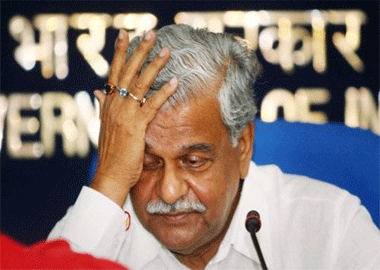
New Delhi, October 3: Union coal minister Sriprakash Jaiswal on Tuesday apologised for the derogatory comments he had made on women, but said he had been quoted out of context.
"I apologise if people are upset, but my comments were taken out of context," Jaiswal, also a Congress Lok Sabha member, told reporters.
He was reacting to criticism of his comments made during a poetry meet at K K Girls College in Kanpur Sunday night when he had likened "the joy of a new victory to a new marriage" and said "as the years go by, the celebrations like in a marriage become old".
Women's organisations have slammed his remarks as sexist and deplorable.
Cornered by reporters, Jaiswal said he was reacting after India's big T20 victory over Pakistan during the poetry meet.
"My remarks have been totally taken out of context. I was inaugurating a kavi sammelan when the news of the cricket victory came. The audience was in a celebratory mood, and I said that a fresh victory when celebrated is good, like a new marriage. In the same way, when a marriage becomes old, then the celebrations are not so much. However, my remarks were taken out of context," Jaiswal said.
National Commission of Women chairperson Mamta Sharma said: "What the coal minister said is very wrong. You cannot compare a woman to a victory. In a marriage as years go by, relations become stronger. He used wrong language for women and he should apologise," Sharma told IANS.
"We shall be writing to the prime minister and to Congress president Sonia Gandhi on the issue," Sharma said.
However, she said the women's panel would not be issuing a notice to the minister.
Congress spokesperson Manish Tewari said that "since the coal minister has already explained and apologised, the matter should rest there".
Jaiswal has been in the eye of a storm over the coal block allocations which the government auditor has faulted for allegedly causing massive loss to the exchequer.






Comments
Add new comment